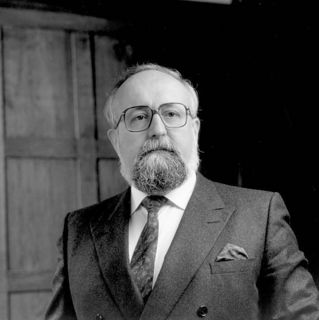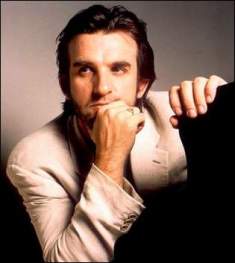
Thoughtful Program for Pearl Harbor Day


This weekend’s
Cincinnati Symphony concerts might have been authorized by an act of Congress.
Friday is “National
Pearl Harbor Remembrance Day” and according to 36 U.S.C. §129, “The President is requested to issue each
year a proclamation calling on the people of the United States to observe
National Pearl Harbor Remembrance Day with appropriate ceremonies and
activities.”
The CSO, led by Polish
guest conductor/composer Krzysztof Penderecki, will do just that at 8 p.m.
Friday and Saturday at Music Hall.
Penderecki, one of
the pre-eminent composers of the last half-century, will lead his “Threnody for
the Victims of Hiroshima” and the world premiere of his newly revised Piano Concerto,
“Resurrection.” Soloist in the concerto
will be Irish pianist Barry Douglas.

“Performing
“Threnody to the Victims of Hiroshima’” on the
As the artistic
head of the CSO, Järvi is ultimately responsible for selecting the
programs. He has shown a flair for
linking repertoire with history and current events, as shown in CSO concerts he
conducted last season coinciding with Election Day and Veterans Day. The former included Shostakovich’s
“Leningrad” Symphony, a 1941 composition that landed the composer on the cover
of Time magazine and helped spur the war effort against Nazi Germany, and the
light-hearted “Slava: A Political Overture,” dedicated to the late Russian
cellist and Soviet dissident Mstislav Rostropovich. Järvi’s Veterans Day program went even
deeper, contrasting Mahler’s questing, valedictory Symphony No. 9 with Olivier
Messiaen’s unquestioning affirmation of faith, “L’Ascension.”
This week’s
Penderecki pairing is equally interesting from a purely aesthetic point of view. (The CSO has dubbed it “The Bold and the
Beautiful.”) “Threnody,” which vaulted
Penderecki to fame in 1960, represents mid-century modernism at its height. The Piano Concerto, written in response to
911, reflects the return to tonality that took place in classical music in general
during the last quarter of the 20th century.
The concert will
open with one of history’s great experimenters, Beethoven, in this case his Symphony
No. 4.
“Between my two
pieces are actually 40 years, but it sounds like 100 years maybe,” said
Penderecki, by phone from
The contrast between “Threnody,” where a
string orchestra spends nine minutes trying not to sound like one, and the Piano
Concerto, a sort of updated late romanticism, could hardly be greater.
Despite their
titles, neither work began life with any extra-musical associations.
Composed when he
was 26, “Threnody” is actually an abstract work. Its original title was 8’37” (“Eight Minutes
and Thirty-Seven Seconds”) after the famous 4’53” by American composer John
Cage. It has no program. After rehearsing it, Penderecki recognized
its emotional impact and decided it needed a contextual reference. The victims of
“Threnody” is a
“sonic” work not based on the traditional building blocks of melody, harmony
and rhythm. Scored for 52 solo strings,
it utilizes the instruments in unconventional ways. Sound masses and pointillistic layers are
organized into segments measured in seconds.
The final 30-second tone cluster has all 52 players on different pitches
fading from very loud to very soft, simultaneously moving their bows from the
bridge to over the fingerboard.
Even the notation,
Penderecki’s own using graphics instead of bar lines and measures, was novelty
for its time. There are symbols for
altering pitches, tapping the instrument, bowing behind the bridge and so on.
“I had to invent
this notation to be able to write this piece, which actually was influenced by
electronic music,” he said. “I was
working in an electronic studio and I wanted to transcribe sounds which were
impossible to produce on stringed instruments.
The result is that the string orchestra doesn’t sound like a string
orchestra. It sounds more electronic.”
Some conductors use
a stop watch to conduct “Threnody.”
Penderecki does not. “This piece
has changed in my mind many times through many performances. I like to be free conducting, not just to
count seconds. That would make it
impossible to make music. The proportions
remain the same. I always need time to
explain the notation, but it is actually easy to play. It doesn’t require technique, really. I did
it also with children’s orchestra.”
During the late 60s
and 70s, Penderecki turned away from severe modernism and began cultivating a
more tonally based, neo-romantic style.
He became known for large choral orchestral works like the “St. Luke
Passion” and “Polish Requiem,” which also reflected his support of the freedom
movement in
Then 911 happened.
“It was a shock for me. After that, I was not
in the mood to write a capriccio. I
decided the piece had to be serious. I
wrote a chorale and called it “Resurrection’ (without a text). I started to write it from the
beginning. It is a completely different
piece.
Though inspired by 911, the work is universal
in its meaning, he said, as “a symbol of life’s victory over death” and the
consolation of faith. The chorale -- not
a quotation, but written in the style of 17th-century Lutheran
chorale -- plays a larger role in the new version, which has an expanded
finale.
“I decided after
the premiere that the piece was too short.”
The Concerto grew by about eight minutes, “an essential change,” he said. “Now it will be 36 or 37 minutes. It is not a typical three movement concerto,
but a kind of symphony concertante. The
orchestra has equal parts as the piano.”
Douglas, who has
played the Piano Concerto all over the world, calls the new ending “rousing”
and “almost swing-like. A truly great
concerto just got greater.”
Penderecki, 74, has
won the Grammy for Best Classical Contemporary Composition twice (in 1988 and
1998, for his second cello and violin concertos). He is often asked about his evolution from
1950s avant garde to his current, more accessible style.
“I don’t like to
stay in the same musical idiom. I’m
always trying to find something new. To
find something new, you have to go back sometimes and be inspired by it.”
Commentators have
remarked that Penderecki’s embrace of more traditional forms coincided with the
beginning of his career as a conductor in the 1970s. Or that his borrowing from the past reflects
a conservationist instinct analogous to the arboretum he maintains at his
country home near
“I like to write
music there. It is a remote place, a big
park, about 70 acres. I am collecting
trees almost 35 years (his German great-grandfather was a forester).
Penderecki has
guest conducted in
“I like this orchestra. It’s like returning home,” he said.
Guest conductor/composer Krzysztof Penderecki leads the CSO at 8 p.m.
Friday and Saturday at Music Hall. On
the program are Penderecki’s “Threnody to the Victims of
(first published in The Cincinnati Post Dec. 6, 2007)